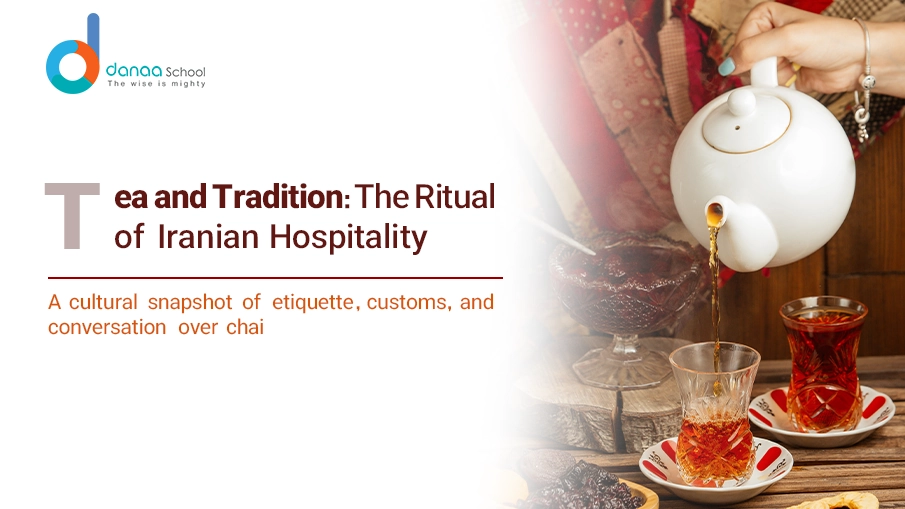Iranian Tea Culture and Etiquette
Tea in Iran is far more than a beverage—it is a symbol of hospitality, respect, and daily ritual. From family gatherings to traditional teahouses, Persian tea culture reflects centuries of social tradition, etiquette, and craftsmanship.
How Iranian Tea Is Traditionally Made
Authentic Iranian tea is known for its deep amber color and strong aroma. It is usually brewed slowly to preserve flavor and depth.
Ingredients
- 2 tablespoons loose Persian black tea (Lahijan tea)
- 4 cups fresh water
- 2–3 cardamom pods (optional)
- Sugar cubes or rock candy (nabat)
Brewing Instructions
- Bring fresh water to a boil.
- Add tea leaves to a teapot.
- Pour boiling water over the leaves.
- Let steep for 10–15 minutes on low heat.
- Serve in small transparent glasses.
Traditionally, the teapot is placed on top of a samovar, allowing the tea to brew gently for extended periods.
Persian Tea Serving Etiquette
Iranian tea etiquette emphasizes patience, respect, and hospitality.
- Tea is always offered to guests upon arrival.
- It is served in small glass cups to showcase color.
- Sugar cubes are placed in the mouth—not stirred into tea.
- Tea is usually served without milk.
Most Popular Teas in Iran
- Lahijan Tea – Iran’s most famous black tea
- Earl Grey – Popular modern blend
- Damnoosh – Herbal infusions (mint, chamomile, saffron)
Iranian Tea vs Western Tea
| Feature | Iranian Tea | Western Tea |
| Strength | Strong & concentrated | Milder |
| Serving Style | Small glass cups | Mugs or cups |
| Sweetening | Sugar cube in mouth | Sugar stirred in |
| Additives | No milk | Milk or lemon common |
Popular Iranian Tea Brands
- Golestan
- Ahmad Tea
- Shahrzad Tea
Join Danaa School
To truly understand Persian culture, language is essential. Learn Farsi with Danaa School and explore Iranian traditions through language, stories, and daily customs.
Conclusion
Iranian tea culture represents warmth, respect, and tradition. From brewing techniques to serving etiquette, tea remains a central ritual in Persian daily life and social interaction.
FAQs
- What makes Iranian tea different? Strong brewing, glass cups, and sugar cubes.
- What tea is most popular in Iran? Lahijan black tea.
- Do Iranians add milk to tea? No, milk is rarely used.
- What is nabat? Rock candy used to sweeten tea.
- Is herbal tea common in Iran? Yes, damnoosh is widely consumed.







